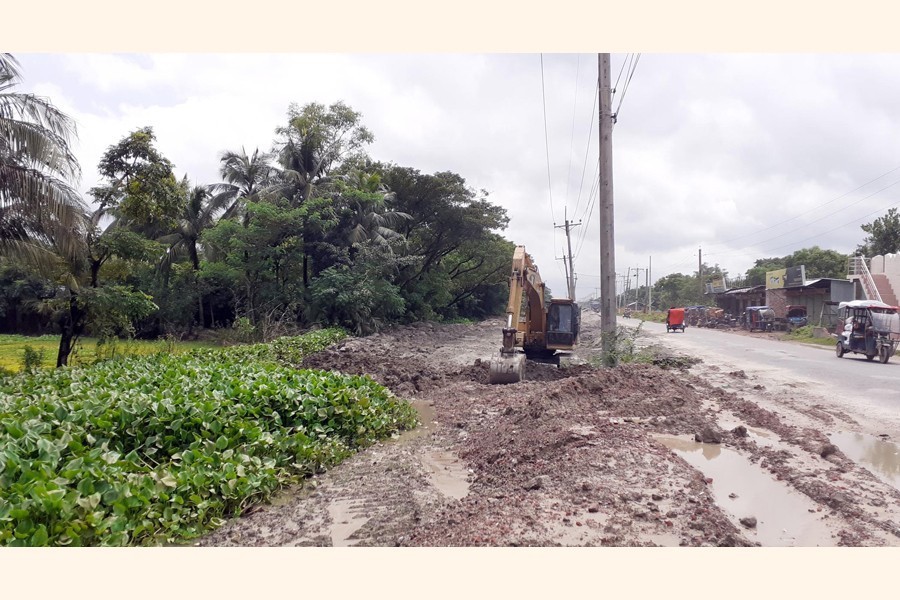
Published :
Updated :

During the period from 2000 to 2010, over 30,000 hectares of land were lost. Rapid urbanisation with new roads and highways as well as the growing population are occupying a vast tract of agricultural land.
But the country's crop production per unit of land has considerably increased year by year. This has helped to negate the effect of the continuing decline in the availability of arable land all overthe country.
As urban areas worldwide continue to grow, the population spreads to the surrounding rural and suburban areas. Many farmers give in to the economic pressures when they realise that the land that they are farming can provide them with substantial cash and they would no longer be engaged in a practice that is at the mercy of weather and economic conditions.
The loss of agricultural land to urbanisation means an increase in environmental problems such as low air quality, transportation problems. Another reason for which agricultural land is lost is soil degradation. Soil degradation is the loss of a soil's natural fertility.
In fact, urbanisation affects food production in two ways-by removing agricultural land from cultivation, as cities expand, and by reducing the number of family farms, as more farmers move to cities.
The spread of cities alone consumes enormous tracts of farmland all over the world. Between 1987 and 1992, for example, China lost close to one million hectares of farmland each year to urbanisation and the expansion of roads and industries. In the US, urban sprawl takes nearly over 400,000 hectares of farmland each year. As for Bangladesh, long-term outlook appears to be bleak as unplanned growth of population is complicating the process of meeting the demand for food, basic health requirements and educational facilities -- triggering unemployment and social unrest. The prospect is really discouraging as resources are outrunning habitants.
What is alarming is that the country, with the world's highest density of population, is fast losing arable land due to growing industrialisation and rapid encroachment of human habitat on farming areas.
The country's fast growing population is now looking for new land to build homes while entrepreneurs are going to remote areas of the countryside to set up factories.
In order to reverse this trend, the government has taken some steps including banning use of arable land for purposes other than agriculture. No doubt this is a laudable step. A high-level committee suggested that the factories and educational institutions that have already been built should now go vertical, instead of grabbing more arable land.
But the government is failing to monitor how much arable land is being transferred for use other than agricultural purposes, as it has dearth of manpower.
The dwindling farm-size size, rise in landlessness and constant depletion of farmland are posing formidable threats to Bangladesh's agriculture, increasing poverty and trapping many ultra-poor people in a vicious circle.
The average farm size has been reduced to less than 0.6 hectares and the percentage of landless people stands at 58 in a country where nearly 80 per cent of the ultra-poor live in rural areas.
Worries about farmland depletion at an alarming rate have fallen on deaf ears, while calls for ensuring optimum utilisation of arable land and bringing fallow land under cultivation remain in rhetoric alone.
Agricultural land loss is a growing problem for Bangladesh with the increase in population. The irony is that while the agricultural land is being lost to growing population, more farmlands will be required to feed the additional number of people so born.
The causes of agricultural land loss are often rooted in the growth strategies of urban areas and are facilitated by politics and economics. The mitigation strategy for the problem can be found in the same places.
Such decline in arable land is worrisome. The authorities concerned should go for regular surveys of arable land to present an accurate figure so that necessary steps can be taken. There is also a need for going vertical to build homes and other infrastructure in order to stop farmland depletion.


 For all latest news, follow The Financial Express Google News channel.
For all latest news, follow The Financial Express Google News channel.